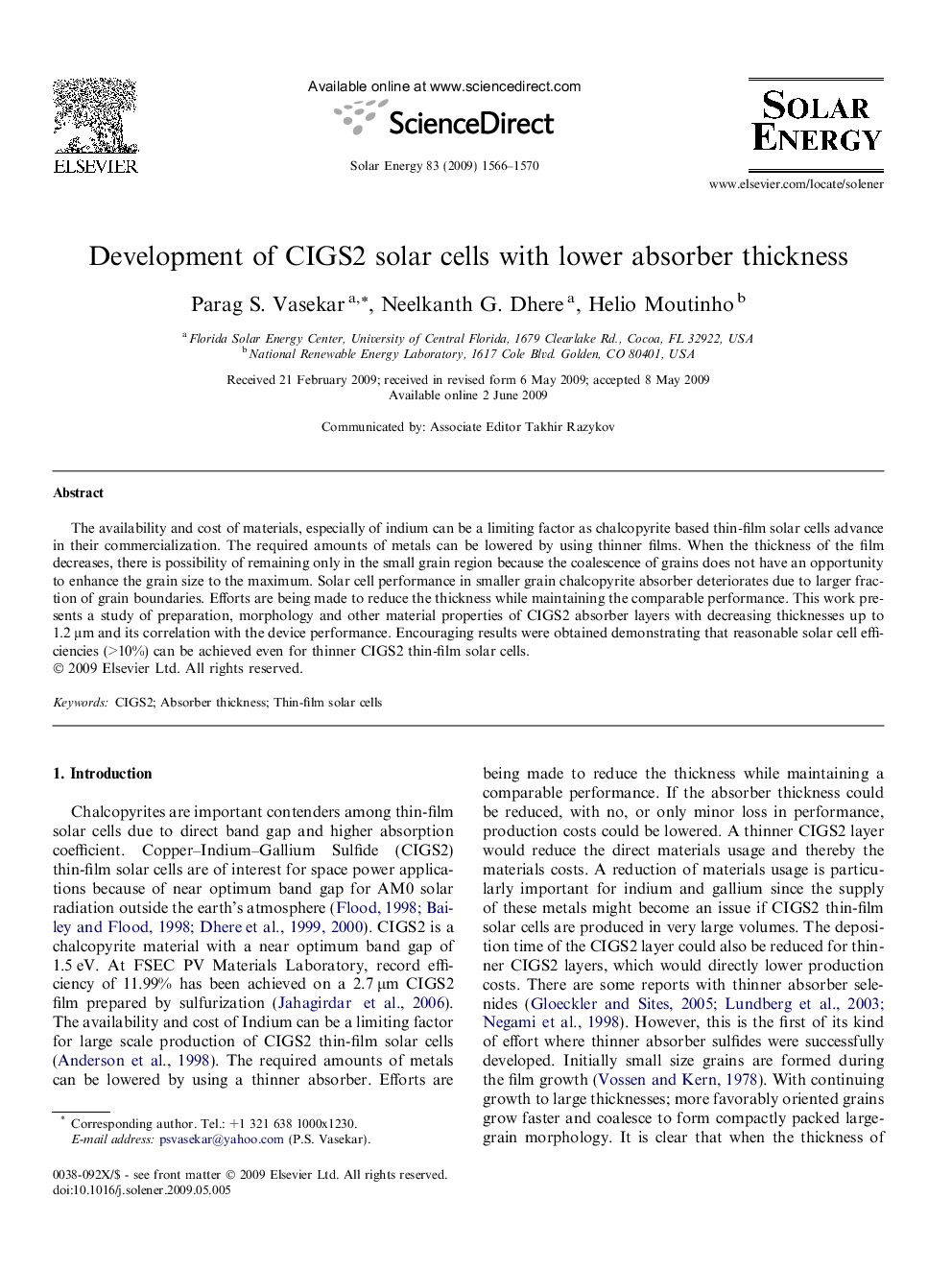| Article ID | Journal | Published Year | Pages | File Type |
|---|---|---|---|---|
| 1551607 | Solar Energy | 2009 | 5 Pages |
Abstract
The availability and cost of materials, especially of indium can be a limiting factor as chalcopyrite based thin-film solar cells advance in their commercialization. The required amounts of metals can be lowered by using thinner films. When the thickness of the film decreases, there is possibility of remaining only in the small grain region because the coalescence of grains does not have an opportunity to enhance the grain size to the maximum. Solar cell performance in smaller grain chalcopyrite absorber deteriorates due to larger fraction of grain boundaries. Efforts are being made to reduce the thickness while maintaining the comparable performance. This work presents a study of preparation, morphology and other material properties of CIGS2 absorber layers with decreasing thicknesses up to 1.2 μm and its correlation with the device performance. Encouraging results were obtained demonstrating that reasonable solar cell efficiencies (>10%) can be achieved even for thinner CIGS2 thin-film solar cells.
Related Topics
Physical Sciences and Engineering
Energy
Renewable Energy, Sustainability and the Environment
Authors
Parag S. Vasekar, Neelkanth G. Dhere, Helio Moutinho,
